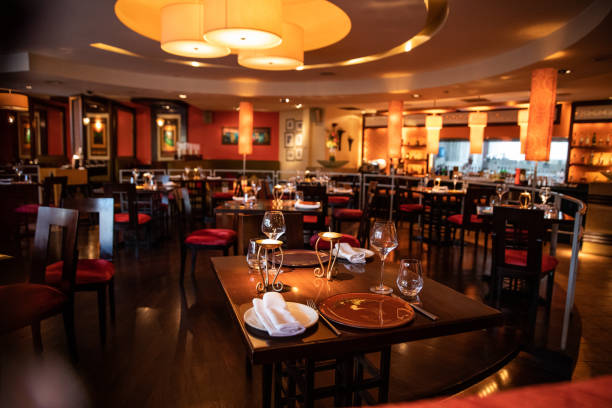Two fundamental principles are the foundation of successful restaurants: great food and efficient restaurant operations.
Many restaurant owners today need to spend more time identifying areas that need improvement. You’ll quickly see that many restaurants fail due to operational inefficiencies such as understaffing, poor stock control, and food waste.
Therefore, it is crucial to have a strategy for restaurant operations management.
Restaurant operations management is the process of improving your restaurant’s management and financial aspects. Although they may be working well, a few adjustments could lead to improved results or operational efficiency in your restaurant.
Here are eight tips that will help you improve your restaurant operation.
Develop Value-Driven Relationships With Your Staff
Talk to any restaurateur, and you will hear the same complaint: retaining and attracting skilled staff is becoming increasingly challenging. A restaurant.org report shows that the industry’s overall turnover rose to 74.9 percent in 2018, compared to 72.5 percent in 2017.
Although the threat of staff shortages will be around for a while, there are methods to reduce staff turnover for front-of-house and back-of-house employees.
Making employees feel valued and respected is the first step. Instead of treating them as an extension of your business, you should tell them they are essential to your company’s success. You can adjust the times of their shifts. If so, use it to create value-driven relationships.
You can make it easier for them to stay on their job by considering their shift preferences, time-off requests, and shift schedules. Communicating openly about what you can offer and what you cannot is essential. This will foster trusting relationships for everyone.
Increase Security in Your Restaurant
There are no two employees the same. Your workforce could include some undesirable personnel who intend to cause damage to your restaurant’s operations, usually through theft.
While this does not necessarily put your reputation at risk, it could mean that your restaurant’s financial viability may be affected by the theft of valuable inventory. One example is when a member of your back-of-the-house team might steal expensive wine, caviar, and other merchandise.
Installing security systems such as wireless cameras, which allow users to create entry and exit points, is the best way to counter all this.
Wireless cameras are a great way to monitor behind-the-scenes activities and ensure efficient restaurant operations management. Although you won’t be able to prevent all mishaps, poor security can drastically reduce the loss.
Make an Operations Manual for Everyone to Use
Many restaurants operate informally and have no documentation. This is evident when an experienced employee trains new employees and leaves out essential systems and practices. This is terrible restaurant management. It should be avoided.
It will prevent errors and improve service standards. This will offset long-term costs and reduce employee turnover. The best practices and policies are what makes a restaurant experience a success.
To improve the efficiency of your staff throughout the day, it is a good idea to establish a standard set of processes for restaurant operations. A restaurant automation software automates the tedious tasks of day-to-day operations like sending reviews after meals, updating reservation status, and tagging guests on autopilot. This will make it easier to streamline your business.
Reduce food waste and use a Food Cost Calculator
According to the Business Case to Reduce Food Loss and Waste: Restaurants report, $7 was saved in operating costs for every $1 spent on initiatives to reduce food waste. If you have too many food items taken out of restaurants in trash bags and dog bags, you’re wasting money. It would help if you were careful about your inventory and portion sizes.
Food waste and spoilage can be reduced by stock rotation and efficient ordering. Knowing how much it costs to make a dish can help you understand the food supply and determine how much you should charge to make a profit.
A food cost calculator can help you reduce waste and improve your bottom line. You can reduce the amount of spoiled, wasted, or stolen food by having recipe costing cards for each item on your menu.
Respect Safety and Health Standards
Restaurants must comply with strict Occupational Health Administration (OSHA), and food safety significantly impacts overall business profitability.
High footfall, satisfied customers, positive reviews, and food hygiene ratings are essential to your business’s success. Food safety compliance starts with the safe preparation, storage, and delivery of food.
It is essential to perform regular temperature checks and accurate logging. You can review weekly temperature reports to identify any deterioration in kitchen equipment and help you address employees who aren’t performing their duties well.
Good airflow will allow for proper temperature control and keep food fresh.
Give Your Employee All the Tools
Most restaurant operations management initiatives aim to improve the customer experience. This goal can be achieved by equipping your front-of-the-house and back-of-the-house staff with the right tools.
Even if employees need to become more familiar with the latest technology in restaurant management, it is worth taking some time to find out what their problems are and which software could help them improve their productivity.




